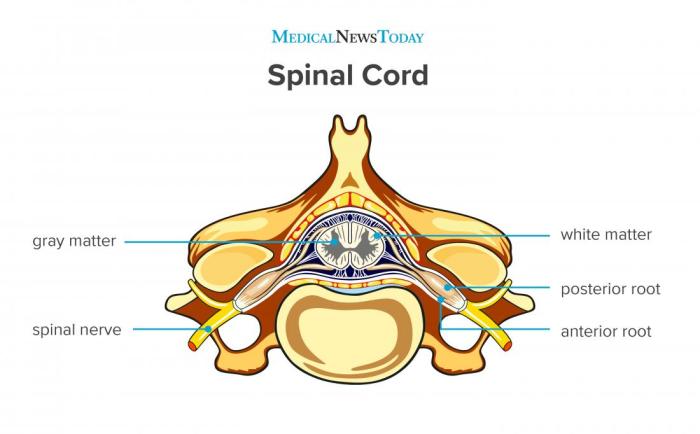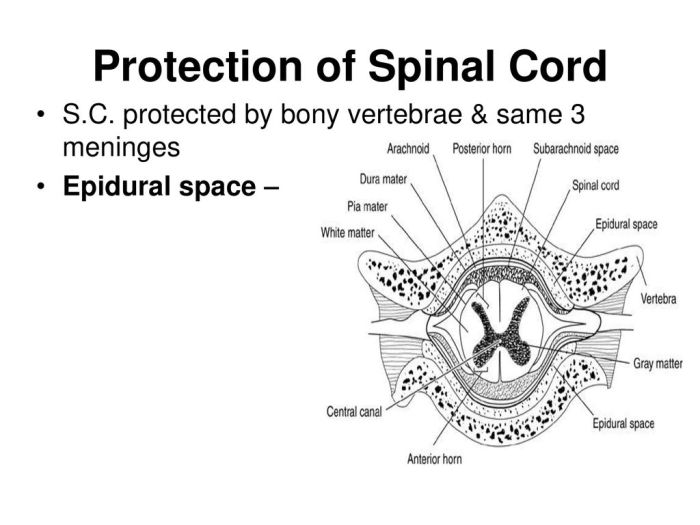Art-labeling activity protection of the spinal cord is an innovative approach that utilizes the power of art to raise awareness, educate, and promote the protection of the spinal cord. Through engaging and accessible art-based initiatives, this activity plays a crucial role in enhancing understanding and inspiring action to safeguard this vital part of the human body.
The spinal cord is a delicate and essential component of the nervous system, responsible for transmitting signals between the brain and the rest of the body. Injuries to the spinal cord can have devastating consequences, leading to paralysis, loss of sensation, and other debilitating conditions.
Art-labeling activities serve as a powerful tool to convey the significance of spinal cord protection, highlighting the potential risks and long-term effects of injuries.
Art-Labeling Activity

Art-labeling activities play a crucial role in the context of spinal cord protection by enhancing understanding and awareness of spinal cord injuries. These activities provide a unique platform to convey complex medical information in an accessible and engaging manner, making it easier for the public to grasp the significance of spinal cord protection and its potential consequences.
Successful art-labeling campaigns have been implemented to raise awareness about spinal cord injuries and their impact. For instance, the “Draw the Line” campaign by the Reeve Foundation utilized art to depict the stories of individuals affected by spinal cord injuries, highlighting the challenges and triumphs they faced.
This campaign effectively resonated with audiences, fostering empathy and understanding.
Importance of Spinal Cord Protection
Protecting the spinal cord from injuries and damage is paramount. Spinal cord injuries can have devastating consequences, resulting in paralysis, loss of sensation, and other long-term impairments. The critical nature of spinal cord protection underscores the need for proactive measures to prevent and mitigate these injuries.
The potential consequences of spinal cord injuries are severe and can profoundly impact individuals’ lives. These injuries can lead to permanent disabilities, affecting mobility, respiratory function, and other bodily systems. Therefore, it is essential to emphasize the importance of spinal cord protection and promote awareness about its significance.
Role of Art in Spinal Cord Protection
Art plays a unique role in promoting spinal cord protection. It provides an accessible and engaging medium to convey complex medical information, making it easier for the public to understand the importance of spinal cord protection and its potential consequences.
Art-based initiatives have been effectively utilized to raise awareness about spinal cord protection. For instance, the “Unbreakable” art exhibition by the Christopher & Dana Reeve Foundation showcased artwork created by individuals with spinal cord injuries, providing a platform for them to share their experiences and inspire others.
Collaboration and Partnerships
Collaboration between artists, healthcare professionals, and community organizations is crucial for the success of art-labeling activities. Partnerships enhance the reach and impact of these campaigns by leveraging the expertise and resources of different stakeholders.
Successful collaborations have been established to promote spinal cord protection through art-labeling activities. For example, the “Art of Healing” program, a collaboration between the University of Miami Health System and the Miami-Dade County Public Schools, engaged students in creating artwork that conveyed the importance of spinal cord protection, resulting in increased awareness and understanding among the school community.
Future Directions, Art-labeling activity protection of the spinal cord
Art-labeling activities have the potential to expand in the field of spinal cord protection. Innovative approaches can be explored to utilize art for education, advocacy, and research related to spinal cord injuries.
Future directions include integrating art-labeling activities into broader spinal cord protection strategies. This could involve incorporating art into educational materials, developing interactive art installations, and supporting research initiatives that leverage art to enhance understanding and awareness of spinal cord injuries.
FAQ Explained: Art-labeling Activity Protection Of The Spinal Cord
What is the purpose of art-labeling activities in spinal cord protection?
Art-labeling activities aim to raise awareness, educate, and promote the protection of the spinal cord by conveying complex medical information in an accessible and engaging manner.
How can art-labeling activities enhance understanding and awareness of spinal cord injuries?
Art-based initiatives can simplify complex medical concepts, making them more relatable and memorable for the general public, thereby increasing understanding and awareness of spinal cord injuries.
What are some examples of successful art-labeling campaigns and their impact?
Successful art-labeling campaigns have included exhibitions, public art installations, and social media campaigns that have raised awareness, influenced policy changes, and inspired individuals to take action towards spinal cord protection.


